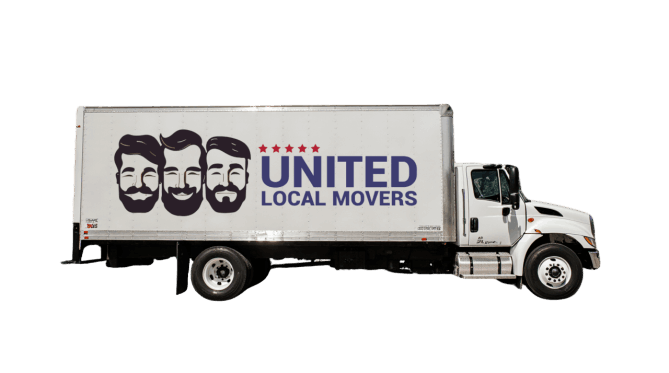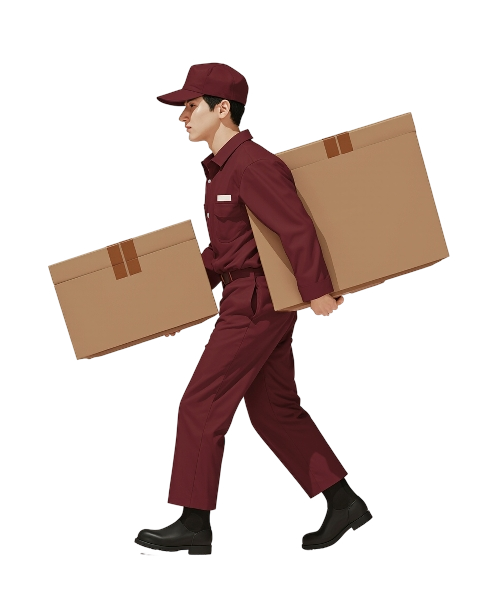One of the most underestimated parts of moving is figuring out how many boxes you actually need. Too few, and you’ll waste time running out for more supplies. Too many, and you’ll overspend or clutter your space. Estimating box counts accurately based on your home size can save you both money and stress.
In this guide, we’ll help you calculate the right number of boxes for your move — and share practical packing tips to make the process easier and more efficient.
Why Estimating Box Counts Matters
Packing isn’t just about throwing things into containers. Having the right number (and type) of boxes helps you:
- 📦 Stay organized room by room
- 💰 Avoid last-minute store runs
- 🧭 Pack efficiently and securely
- 🚛 Keep your moving costs under control
Professional movers like United Local Movers use box counts as part of their moving estimates — so getting it right matters.
Step 1: How Box Counts Are Typically Calculated
Box count isn’t random — it’s usually estimated based on:
- 🏡 Square footage of the home
- 🧳 Number of bedrooms
- 👨👩👧👦 Number of people living there
- 🧺 How much stuff you actually have
- 🧰 Special items (books, kitchenware, fragile decor)
In general, movers use a formula of 10–15 boxes per room on average — but this varies by lifestyle and home size.
Step 2: Recommended Box Counts by Home Size
Here’s a useful breakdown of typical box counts for standard home sizes:
| Home Size | Approx. Sq Ft | Number of Boxes | Suggested Box Types |
|---|---|---|---|
| Studio / 1-Bedroom Apartment | 400–800 sq ft | 20–40 boxes | Small, medium, wardrobe, a few dish packs |
| 2-Bedroom Apartment / Small Home | 800–1,200 sq ft | 40–60 boxes | Medium, large, wardrobe, kitchen-specific boxes |
| 3-Bedroom Home | 1,200–1,800 sq ft | 60–90 boxes | Medium, large, wardrobe, dish packs, book boxes |
| 4-Bedroom Home | 1,800–2,500 sq ft | 90–120 boxes | Large, wardrobe, specialty boxes, extra dish packs |
| 5+ Bedroom Home | 2,500+ sq ft | 120–200+ boxes | All sizes, extra specialty boxes, crating for fragile items |
Keep in mind these numbers are averages. Minimalists might use fewer boxes, while families with kids or collectors may need more.
Step 3: Types of Boxes and Their Uses
Not all boxes are created equal. Choosing the right type makes packing safer and more efficient:
- 📦 Small boxes (1.5 cu ft) — books, heavy kitchen items, tools
- 📦 Medium boxes (3 cu ft) — clothes, linens, toys
- 📦 Large boxes (4.5+ cu ft) — bulky lightweight items
- 👕 Wardrobe boxes — hanging clothes
- 🍽️ Dish packs — plates, glasses, fragile kitchenware
- 🪵 Crates or specialty boxes — art, electronics, antiques
Having a mix of sizes ensures that your boxes don’t get too heavy or break during the move.
Step 4: Adjusting Box Counts Based on Lifestyle
Two homes of the same size can require very different packing strategies. Consider:
- 📚 If you have a lot of books or collectibles — add more small boxes
- 👕 If you have lots of clothes — add wardrobe boxes
- 🍳 Large kitchens — add more dish packs
- 🎨 Fragile decor — add specialty boxes
It’s better to overestimate slightly than to run short during packing.
Step 5: Packing Strategies That Reduce Waste
Getting the right number of boxes is just the beginning. How you use them matters too:
- 🧾 Label boxes by room and contents
- 🧭 Load heavy items into small boxes to avoid breakage
- 🪜 Fill gaps with soft items like towels and clothes
- 🚛 Stack boxes of similar sizes for stable loading
Efficient packing saves time on both ends of your move.
Step 6: Specialty Items That Require Extra Packing
Some belongings can’t be packed like the rest. Consider adding extra boxes for:
- 📺 Electronics and TVs
- 🎹 Musical instruments
- 🪞 Mirrors and glass tops
- 🎨 Art and antiques
- 🧳 Seasonal decorations or outdoor gear
These often need reinforced boxes or crating for protection.
Step 7: Buying vs. Renting vs. Reusing Boxes
Once you know how many boxes you need, consider your sourcing options:
- 🛒 Buying new boxes — sturdy, uniform, clean
- 🔄 Reusing boxes — eco-friendly but may lack durability
- 📦 Renting plastic bins — stackable and reusable
New boxes are ideal for fragile or valuable items, while reused ones can be great for non-fragile belongings.
Step 8: Don’t Forget Other Packing Supplies
Boxes alone aren’t enough. Make sure to include:
- 🧻 Packing paper and bubble wrap
- 🪙 Tape and dispensers
- 🪵 Markers and labels
- 🛡️ Corner protectors
- 🪜 Furniture blankets
These small details make a big difference in protecting your belongings.
Step 9: Build Your Packing Timeline
Having your boxes ready ahead of time allows for a smoother packing process. A smart timeline might look like this:
- 📅 6 weeks out — order supplies and start decluttering
- 📦 4 weeks out — pack storage areas and non-essentials
- 🏡 2 weeks out — pack most rooms
- 🧳 Final week — essentials only
Spreading out the work keeps packing from becoming a last-minute nightmare.
Step 10: How Movers Use Box Counts
Professional movers don’t just estimate weight or cubic feet — they use box counts to:
- 📝 Plan truck space
- 👷 Estimate labor time
- 🚚 Schedule crew size
- 💰 Build accurate quotes
Providing an accurate box count upfront helps companies like United Local Movers give you a precise estimate and avoid unexpected charges.
Step 11: Budgeting for Your Box Count
Box costs add up, especially for large homes. Estimate roughly:
- 📦 Small box: $1–3
- 📦 Medium box: $2–4
- 📦 Large box: $3–5
- 👕 Wardrobe box: $10–15
- 🍽️ Dish pack: $8–12
For a 3-bedroom home with 80 boxes, packing materials alone can run $300–500 depending on quality and location.
Step 12: Overestimating vs. Underestimating
If you’re unsure, it’s better to order slightly more boxes than you think you’ll need. Extra boxes can always be returned, reused, or recycled — but running out mid-pack is a headache you can avoid.
Smart Packing Starts with Smart Estimating
Knowing how many boxes to buy — and which kinds — can make or break your moving experience. With a clear estimate based on your home size, you’ll stay organized, save money, and avoid last-minute stress.
With United Local Movers, your relocation becomes safer, faster, and stress-free — starting with the right number of boxes.





